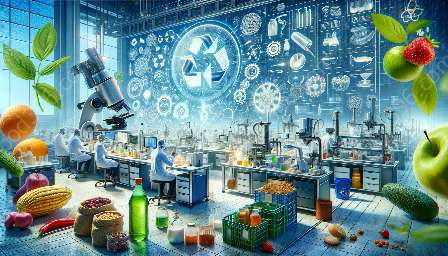Food regulations and policy play a critical role in ensuring the safety, quality, and labeling of food products. These regulations are established by government agencies to protect public health and maintain fair trade practices within the food industry.
Overview of Food Regulations and Policy
Food regulations consist of a set of rules and standards that govern the production, distribution, and marketing of food products. These regulations are designed to protect consumers from potential health hazards, fraudulent practices, and mislabeling of food items. Regulatory agencies, such as the Food and Drug Administration (FDA) in the United States and the European Food Safety Authority (EFSA) in the European Union, are responsible for enforcing these regulations and ensuring compliance across the food supply chain.
Key Aspects of Food Regulations
Food regulations encompass various aspects, including food safety, labeling requirements, and permissible food additives. One of the primary objectives of food regulations is to prevent foodborne illnesses by implementing stringent safety measures and hygiene standards in food production facilities. Additionally, food labeling regulations mandate the accurate disclosure of ingredients, nutritional information, and allergen warnings to help consumers make informed choices about the foods they consume.
Intersection with Food Science and Technology
Food science and technology are closely intertwined with food regulations and policy. As the food industry continues to innovate and develop new products, food scientists and technologists must adhere to regulatory standards to ensure that their products meet safety and quality requirements. Moreover, advancements in food processing technologies and the use of food additives necessitate thorough evaluation and approval by regulatory authorities to guarantee their safety for consumption.
Understanding Food Ingredients and Additives
Food ingredients and additives are fundamental components of food products, contributing to their flavor, texture, and preservation. These substances undergo rigorous scrutiny by regulatory agencies to determine their safety and suitability for use in food manufacturing.
Classification of Food Ingredients and Additives
Food ingredients and additives can be classified into different categories based on their function and regulatory status. Common categories include emulsifiers, preservatives, colorants, flavor enhancers, and sweeteners. Each category serves specific purposes in food formulation and undergoes thorough assessment to ensure that it complies with regulatory standards.
Relationship with Food Regulations and Policy
Food regulations and policy directly impact the use of food ingredients and additives in the food industry. Regulatory agencies evaluate the safety and efficacy of these substances, setting maximum limits for their use and establishing permissible levels of exposure in food products. Additionally, labeling regulations require manufacturers to disclose the presence of specific ingredients and additives on product labels, enabling consumers to make informed decisions and avoid potential allergens or undesired components.
Technological Advancements in Food Science
Advances in food science and technology have revolutionized the food industry, facilitating the development of novel food ingredients and additives. These innovations have led to the creation of functional ingredients, such as probiotics, prebiotics, and plant-based alternatives, which offer health benefits and cater to evolving consumer preferences.
Implications for Food Regulations
The emergence of new food ingredients and additives poses regulatory challenges, as regulatory agencies must assess their safety, nutritional value, and potential health effects. Furthermore, the rapid pace of technological innovation necessitates proactive regulatory frameworks to adapt to the evolving landscape of food science and technology.
The Future of Food Regulations and Policy
The future of food regulations and policy is shaped by ongoing developments in food science, technology, and consumer behavior. As the global food industry continues to expand and diversify, regulatory agencies are tasked with addressing emerging issues, such as food fraud, sustainability, and novel food technologies, while maintaining the essential principles of food safety, transparency, and consumer protection.
Conclusion
Food regulations and policy serve as the backbone of the food industry, safeguarding public health and ensuring the integrity of food products. By understanding the intersection of food regulations with food ingredients and additives, as well as food science and technology, stakeholders in the food industry can navigate regulatory complexities, innovate responsibly, and meet the evolving needs of consumers and society.

